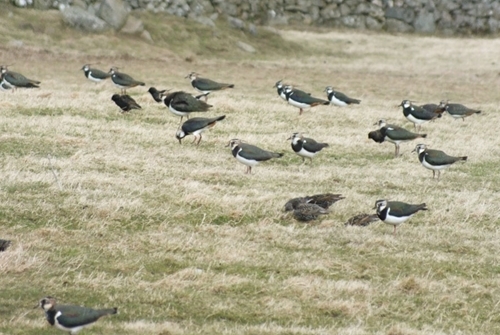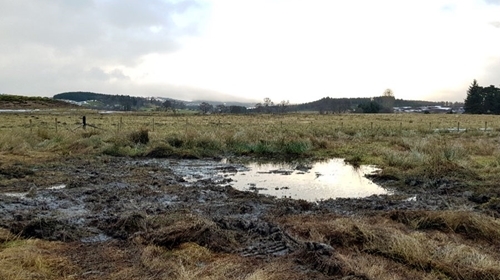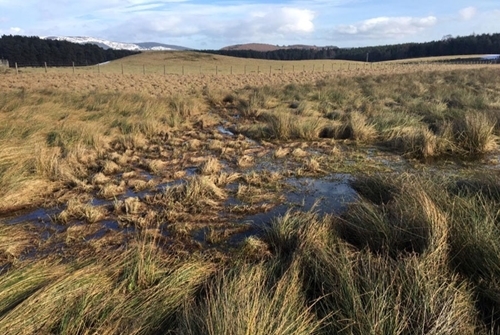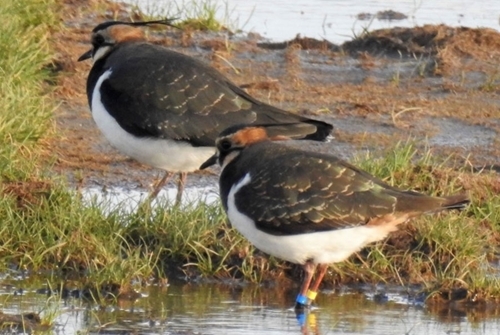By Dr Dave Parish, Head of Scottish Lowland Research
It’s that exciting time of year again when waders start to drift back to their breeding grounds. At Auchnerran, we noticed the first flock of about 40 lapwing on 20 February, which had quickly increased to almost 120 by the 23rd. So far, our other waders are being a little more cautious with just a single curlew and two oystercatcher on site. At this time of year they do little more than hang around in flocks feeding in our pastures, waiting for the cue to start breeding. This is strongly weather dependent, and a few days of warmth can start males displaying, often only to halt again if the weather reverts to anything less suitable.
 Some of our lapwing gathering at Auchnerran, credit Marlies Nicolai.
Some of our lapwing gathering at Auchnerran, credit Marlies Nicolai.
This is a particularly exciting year for the team at Auchnerran as we have just begun some management work to try to improve habitats for breeding waders. We have dug three new scrapes and extended an existing one, complementing the two we installed in 2019 as part of our Agri-Environment and Climate Scheme agreement. As soon as the ground dries out a bit (fingers crossed) we will also begin cutting rushes and clearing scrub in other areas. This is all thanks to support from the Working for Waders small grant scheme, which is helping practitioners across Scotland do similar things. Our routine monitoring will show how the birds respond to these interventions and help us refine future guidance for practitioners.

One of the new scrapes under construction last week. These provide
open, wet ground for waders to forage in, credit Marlies Nicolai.
 One of the areas earmarked for some rush cutting in the next couple of weeks.
One of the areas earmarked for some rush cutting in the next couple of weeks.
The aim is to create a mosaic of vegetation of different heights to provide a mix
of resources within a small area, credit Marlies Nicolai.
Now that some of our lapwing have returned, we have started searching for ringed or tagged birds. Back in 2019 we put GPS tags on 13 lapwing and nine of them returned to the farm in 2020, revealing a wealth of information about where they had been in the interim. It is very likely that some of them will be back again this year, so we have deployed our receiver unit to see if we can detect them and so access their precious cargo of information.
Whenever we survey our lapwing population, we also look for colour-ringed birds. These allow us to identify and follow the activities of individuals and build up a picture of their lives, which becomes increasingly valuable the more information we gather. Already we know from both the tagged and ringed birds that most of the Auchnerran lapwing probably winter in Ireland, and we have a huge database of locations that the birds have spent time in – information that we hope to exploit more in 2021 (COVID-19 permitting) to investigate the characteristics of these areas. We also managed to ring and tag a couple of curlew in 2018 and 2019 too, and we are keeping our fingers crossed that they return this year.
 A colour-ringed lapwing, snapped on its wintering grounds in Ireland, credit GWCT.
A colour-ringed lapwing, snapped on its wintering grounds in Ireland, credit GWCT.
Obviously COVID-19 has severely impacted many organisations, and the GWCT is no different, so it is still unclear what we can achieve this year as we struggle to raise funds for projects, but we hope to tag additional lapwing and curlew at Auchnerran to learn more about their movements and so help land managers to better support these birds.